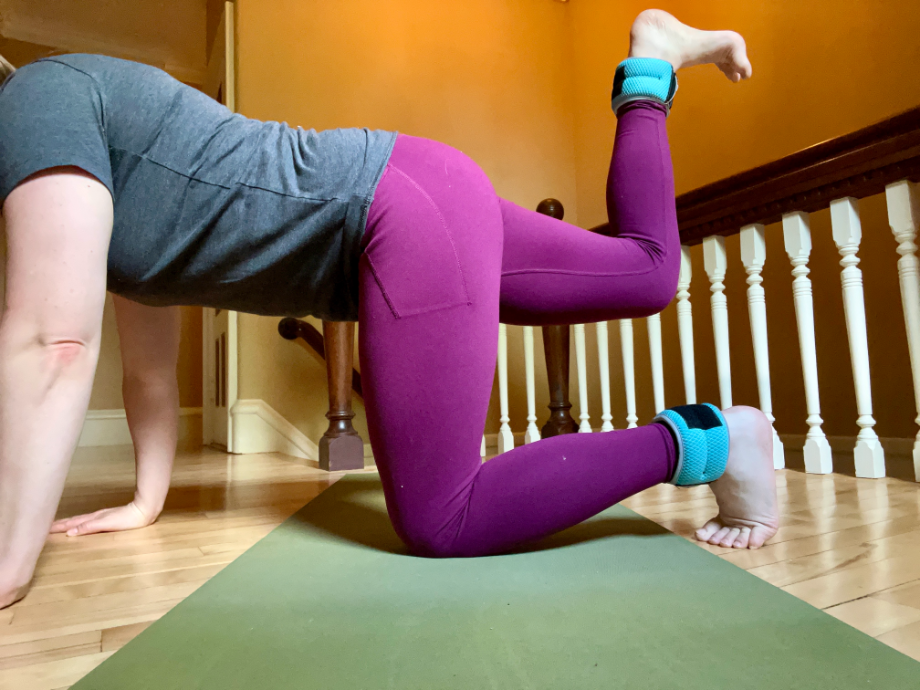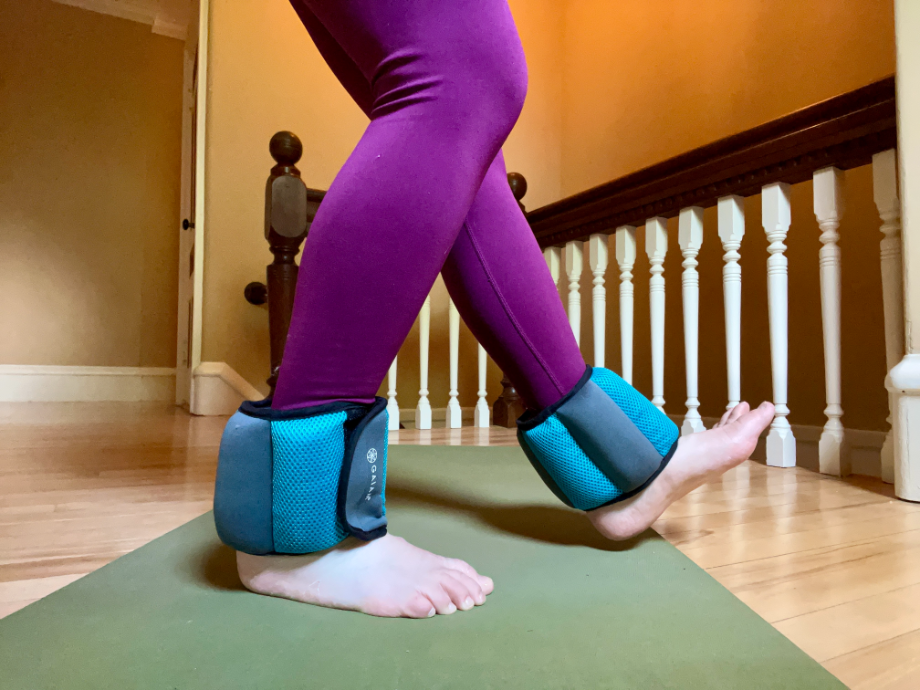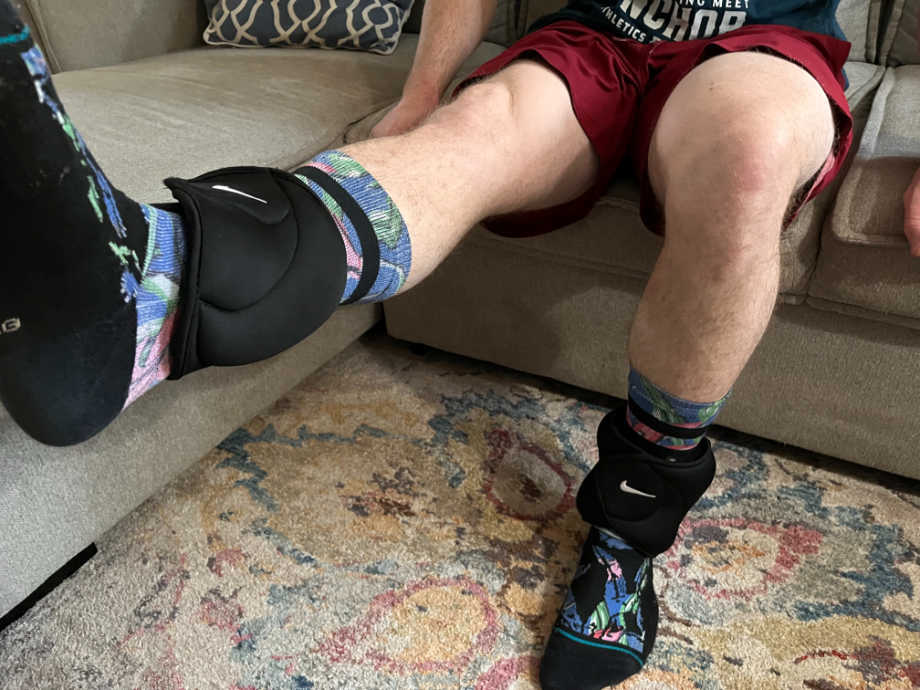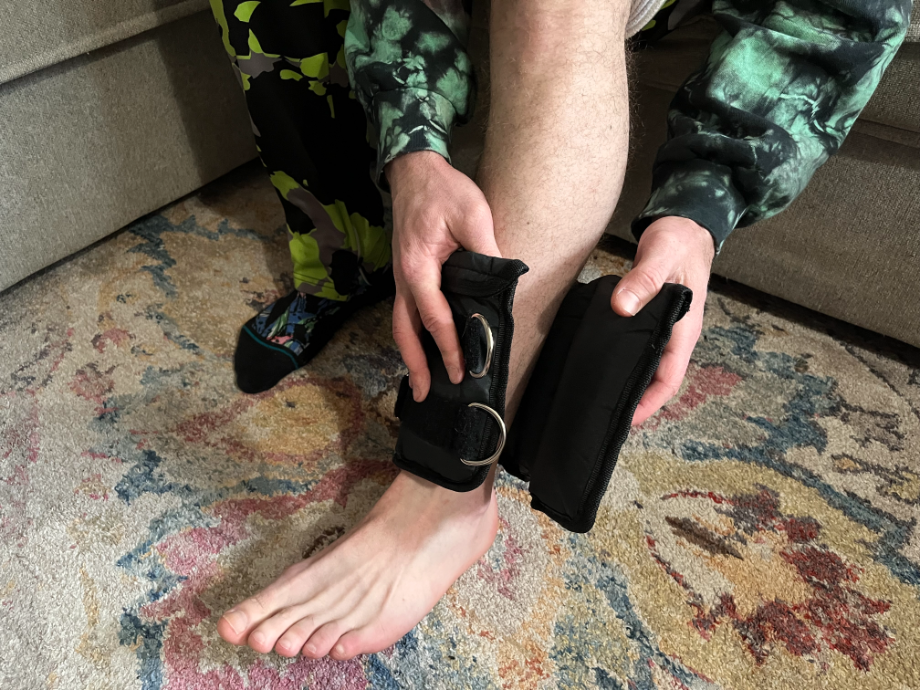We test and review fitness products based on an independent, multi-point methodology. If you use our links to purchase something, we may earn a commission. Read our disclosures.
As much as my GGR teammates and I love testing and reviewing the best Olympic barbells or the best squat racks, not everyone has access to top-of-the-line equipment. Whether it’s due to budget constraints, availability, or another reason, that shouldn’t stop you from doing everything possible to make progress toward your strength- and muscle-building goals.
With decades of combined experience working out in home and commercial gyms, we’ve learned an important lesson: Sometimes it’s better to do it yourself.
RELATED: DIY Gym Equipment
From making DIY concrete dumbbells so you can crush sets of biceps curls at home to figuring out how to make a DIY weight vest for less than $75, we’ve discovered some creative (and budget-friendly) hacks to craft your own fitness equipment out of common materials. We even have a tutorial on making your own weight plates at a fraction of the cost of commercial plates.
If you’re looking for an easy DIY project to help take your lower-body workout routine to the next level, you may be surprised at how quickly you can make DIY ankle weights. With the help of GGR’s DIY guru Sam Presley, I put together this comprehensive guide that includes a list of materials and step-by-step instructions so you can produce a pair of homemade ankle weights that won’t slip or cause any chafing.
Plus, I’ll touch upon the benefits of using ankle weights and go over some of my favorite exercises that incorporate this underrated piece of equipment. So, wake up the right side (aka the creative half) of your brain, find a comfortable space, and get ready to flex your DIY muscles!
What Are Ankle Weights Used For?
The best ankle weights allow everyone, from beginners to seasoned fitness enthusiasts, to train their lower body with more resistance. Similar to wrist weights, they typically range between 1 to 5 pounds, attaching around your ankles with a Velcro strap or metal buckle. Many models use mini sandbags for resistance, giving you the ability to add or remove weight in specific increments, usually topping out around 25 pounds.
That may not seem like much if your home workouts usually involve kettlebell swings or sandbag carries, but as a certified personal trainer (CPT) and longtime athlete, I can attest that even adding a pound or two around your ankles can quickly turn an easy exercise into a challenging one.

Though not quite as versatile as a set of the best adjustable dumbbells, you can use a pair of ankle weights for several purposes, including:
- Pilates
- Core workouts
- Walking
- Jogging
- Single-leg exercises (unilateral training)
- Physical therapy/injury rehabilitation
- Balance training
RELATED: Unilateral Exercises
Expert Insight on How to Make DIY Ankle Weights
“Teamwork makes the dream work” is something we live by at GGR. With that motto in mind, I reached out to our Operations Manager and resident DIY equipment expert, Sam Presley, for some tips and insight on how to make your own ankle weights without burning a big hole in your pocket.
While commercially made ankle weights can cost as little as $10 or as much as $130, Sam says you may not even have to dish out more than a few dollars, depending on what materials you have around your house. Plus, you can save time by going the DIY route rather than driving to a store or waiting for a delivery.
“DIY is a great budget-friendly option as opposed to buying from manufacturers because you’ll save time and money, and you can replace them as many times as you need,” he explains. “The only reason to buy from manufacturers would be for style, comfort, perfectly proportioned weight or specific weight as opposed to measuring cups if you don’t have a scale.”
Ankle Weight Options
According to Sam, a sock can serve as the “container” for whatever material you use as weight. He suggests the following options for adding a few pounds around your ankles:
- Rice (dry)
- Beans (dry)
- Sand
- Magnets
- Fishing weights
- Marbles

Another option is aquarium substrate, which usually comes in the form of gravel, sand, or river stone. Either way, you’ll need an accurate scale to measure the exact amount of weight for consistency.
“If you already have a sock, you can use that and measure out beans with a measuring cup from your kitchen,” Sam explains. “Or you can do something like spend money on materials and sewing equipment or use a sewing kit from home.”
RELATED: DIY Slam Ball For Under $25
Materials for Securing Ankle Weights
Of course, you also have to consider how you’re going to secure the weights around your ankles. While Velcro is a popular option for DIY wrist and ankle weights, you don’t have to go in that direction.
Here are Sam’s suggestions for alternative methods for tying your homemade weights around your ankles:
- Shoelace
- Duct tape
- Loop tape
- Buttons
- Magnets
- Hair tie
- Ribbon
- Belt
- Chain
Depending on your materials, you may need a needle and thread, pieces of fabric or leather, scissors, and/or a sewing machine. Ultimately, though, it shouldn’t take long for you to create a reliable pair of DIY ankle weights.
“On average, it will take less than five minutes, depending on if you’re just tying up beans in a sock or taking the time to sew the fabric in sections and filling those sections based on the scale weight to make it look a little fancier,” Sam explains.
Step-by-Step Instructions for DIY Ankle Weights
The sock-and-means method seems to be the easiest way to turn household items into a useful piece of fitness equipment. With a little help from Livestrong, here’s a quick tutorial on how to make DIY ankle weights:
- Weigh out dried beans on a food scale, preferably between 1 to 3 pounds.
- Weigh out an equal portion for the second weight.
- Tie a knot about a quarter of the way up a long tube sock.
- Pour the beans into the sock.
- Tie a second knot directly above the beans, about a quarter of the way down from the top of the sock.
- Tie the empty ends of the sock around your ankle, or attach fastener strips or Velcro for a more secure fit.
- Repeat with the other sock.
RELATED: DIY Weight Bench
Benefits of Ankle Weights
While many people focus on losing weight, why would you want to add more pounds to your frame—at least temporarily? Whether you’re a performance-focused athlete or someone simply trying to improve their balance, let’s explore the benefits of using ankle weights.
Can Help Improve Your Gait
Many factors influence your gait—otherwise known as your walking or running pattern. This includes age, past injuries, mobility limitations, your choice of footwear, and neurological conditions1. According to a 2017 study in the Journal of Exercise Rehabilitation2, ankle weight training can help correct gait-related problems by providing stability to the lower limbs. Researchers found that weight loading that corresponds to 1% of your body weight can help improve your walking ability, which can contribute to an overall better quality of life.

RELATED: Walking Technique
Can Help Improve Your Balance and Stability
Maintaining a strong, stable base is particularly important for older adults, as fractures and fall-related injuries can lead to expensive medical costs and other challenges. One way to reduce the risk of falls is to include balance improvement exercises.
According to a 2022 study in the International Journal of Environmental Research and Public Health3, wearing ankle weights can help strengthen the lower limb and trunk muscles in older adults. Combining balance exercises with functional and resistance exercises has been shown to reduce the risk of falls, making ankle weight training an effective frailty prevention protocol.
RELATED: Balance Board Workout
Can Help Enhance Your Lower-Body Strength
Thought glute kickbacks were tough with just your body weight? Perform them with 5-pound weights strapped around your ankles, and let me know how bad your backside burns by the 10th rep. Whether you use them for walking lunges or a beginner StairMaster workout, you can count on ankle weights to increase your lower-body strength and stamina.
RELATED: Leg Day Exercises
Can Help Improve Your Speed and Agility
Trying to get that extra edge on the field, court, or wherever you play your sport? Don’t underestimate the potential impact of using ankle weights to enhance your training. A study conducted at the University of Muhammadiyah Malang4 in Indonesia found that ankle weight exercises increase soccer players’ agility, speed, and long-passing power. The researchers concluded that ankle weight exercises led to increased muscle strength and power, forming new muscle fibers and increasing mitochondria (the powerhouse of your cells).

RELATED: Best Agility Exercises
DIY Ankle Weights: Final Thoughts
Are homemade dumbbells or ankle weights necessarily better than ones you can get from manufacturers? The answer rests heavily on your DIY skills and your patience. But as any savvy home gym owner knows, it’s worth taking some time and thinking outside the box to save money and enjoy the satisfaction of creating your own jump rope or other piece of equipment that can help you get in shape.
So, even if you aren’t totally confident in your crafting skills, I encourage you to give these DIY ankle weights a fair shot. Just like it requires many repetitions to master the proper squat form, it takes practice to excel at making your own workout equipment.
DIY Ankle Weights: FAQs
What’s the best weight for ankle weights?
The best weight for ankle weights depends on your fitness level and goals. As a CPT, I recommend starting in the 1- to 5-pound range, as you can gradually increase the amount of weight as you develop strength and stability.
What are ankle weights filled with?
Manufacturers and those who go the DIY route use a variety of materials to fill ankle weights, including sand, iron shot or powder, beans, rice, magnets, fishing weights, and marbles.
Can you build muscle with ankle weights?
Yes, wearing ankle weights can provide an effective muscle- and strength-building stimulus, as this engages your calf and leg muscles more than just using your body weight. However, I would focus most of your resistance training efforts on the actual movements rather than the equipment, as compound exercises like squats, deadlifts, and lunges will give you the most bang for your buck.
References
- Ataullah, A. H. M., & De Jesus, O. (2024, April 20). Gait disturbances. StatPearls – NCBI Bookshelf. https://www.ncbi.nlm.nih.gov/books/NBK560610/
- Hwang, J., Lee, S., Park, J., Ahn, S., Lee, K., & Lee, S. (2017). The effects of ankle weight loading on the walking factors of adults without symptoms. Journal of Exercise Rehabilitation, 13(4), 425–429. https://doi.org/10.12965/jer.1734954.477
- Akatsu, H., Manabe, T., Kawade, Y., Masaki, Y., Hoshino, S., Jo, T., Kobayashi, S., Hayakawa, T., & Ohara, H. (2022). Effect of ankle Weights as a Frailty Prevention Strategy in the Community-Dwelling Elderly: A Preliminary report. International Journal of Environmental Research and Public Health, 19(12), 7350. https://doi.org/10.3390/ijerph19127350
- Multazam, A.; Merindayanti, S.; Aisyah, A.; Primadana Ajie, F. and Yuliadarwati, N. (2020). Effectivity of the Ankle Weight Exercise to Increasing Football Player’s Agility, Speed and Long Passing Power. In Proceedings of the 2nd Health Science International Conference – HSIC; ISBN 978-989-758-462-6, SciTePress, pages 205-208. DOI: 10.5220/0009127502050208
Further reading

There’s no reason why you can’t stick to your fitness goals when traveling. You may have to adapt, so here are 6 trainer-approved hotel gym workouts to try. Read more

As much as my GGR teammates and I love testing and reviewing the best Olympic barbells or the best squat racks, not everyone has access to top-of-the-line equipment. Whether it’s due to budget constraints, availability, or another reason, that shouldn’t stop you from doing everything possible to make progress toward your strength- and muscle-building goals. With decades of combined experience working out in home and commercial gyms, » Read more about: Your Expert Guide to Making Budget-Friendly DIY Ankle Weights » Read more

In this data study, we’ll look at generational differences in fitness trends, equipment, and exercise as we survey multiple age groups. Read more

The XPO Trainer Sled from Armored Fitness is an innovative sled that combines a resistance motor with wheels to allow for a nearly silent operation and an absolutely brutal workout. After putting it through various workouts including sprints, intervals, and longer distance pushes, we feel confident recommending the XPO Trainer to anyone wanting a compact, quiet, and effective sled. Read more

